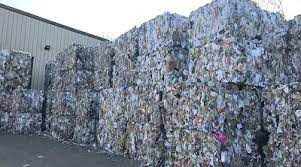Refuse-Derived Fuel Is Produced From Various Commercial And Industrial Waste And Is Used As An Alternative For Non-Renewable Fuels
Refuse-derived fuel comes from non-combustible materials such as oil, natural gas and sewage sludge. There are two main sources of refuse-derived fuels in the world today: animal biobutanol and vegetable oil. Both of these can be used as renewable energy sources.
Animal biobutanol is created from organic matter such as fish and dairy
waste. The waste dissolves in a process called chemical oxidation and forms the
source of the foul-smelling gas. Biomass is the material that is changed into refuse-derived
fuel for a number of processes, including making gasoline and diesel from
biomass; this is also known as biofuel. Vegetable oil is derived from plant
materials such as vegetable oil leaves and crops.
Commercial and industrial wastes are highly
combustible and can easily generate pollution. On the other hand,
refuse-derived fuels such as bio-alcohol and vegetable oil do not produce any
such problems since they are not easily combustible. This means that the energy
content of both the animal biobutanol and vegetable oil can be easily harnessed
to generate electricity. These methods can be applied to commercial waste
streams to produce electricity without the danger of causing serious
environmental pollution. For instance, in July 2021, the Newry-based waste
management company in the U.K., Re-Gen Waste, received a major investment of
around US$ 687,000 from CK International to optimize packaging, minimize the
release of pollutants, and improve fuel efficiency.
Another method that is used to produce electricity from refuse-derived
fuel is 'linear heat' which involves using the heat from burning solid waste in
a reciprocating iron ring. In this process, the waste is oxidized by heating it
up in an iron circle. This causes the solid waste to be drawn into the iron
circle where heat is absorbed and converted to electricity. This is the most
commonly used technology to convert solid waste into electricity. This method
can generate enough electricity to power a small village.


Comments
Post a Comment